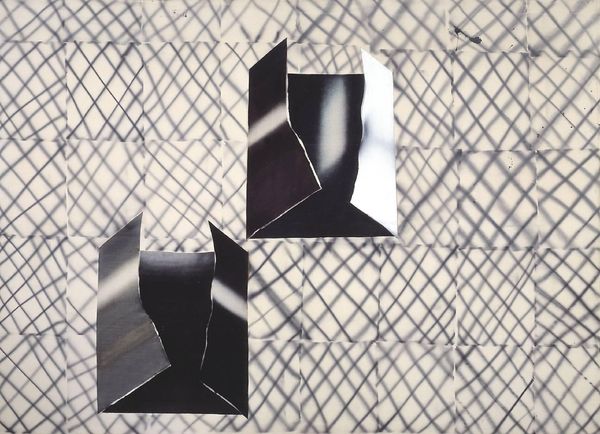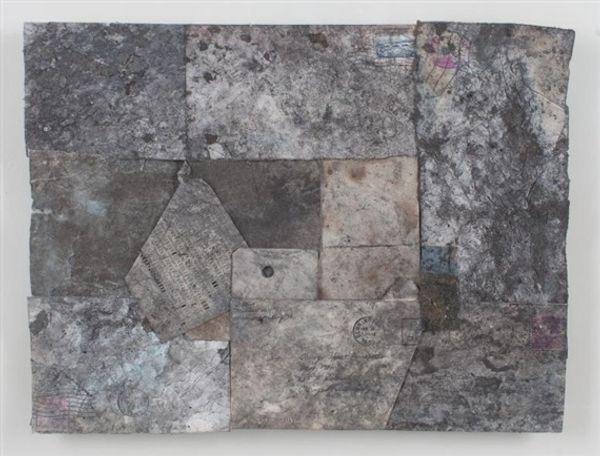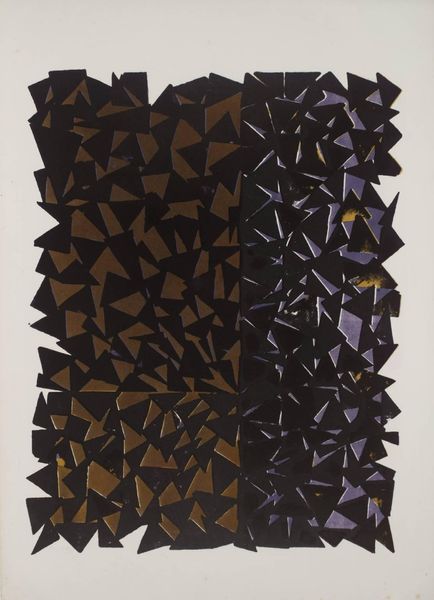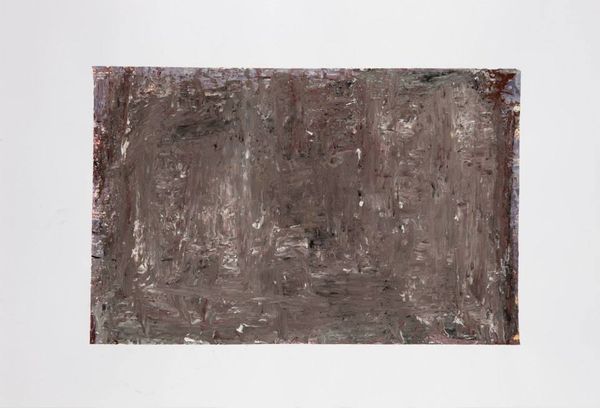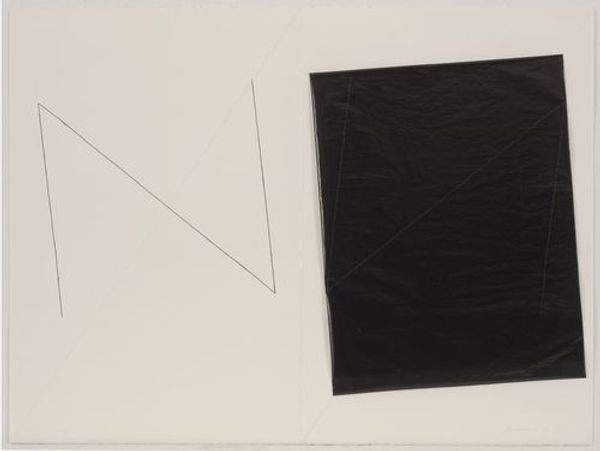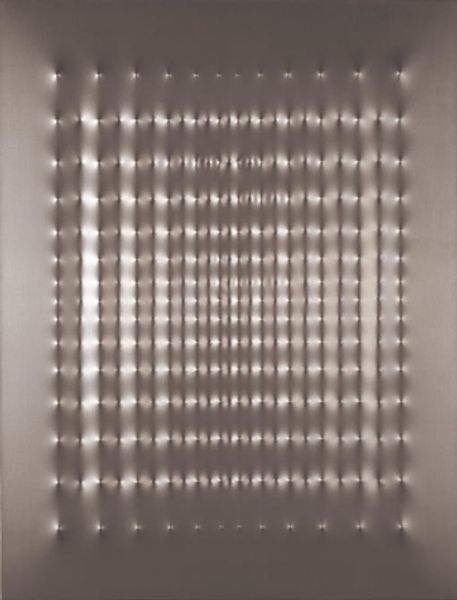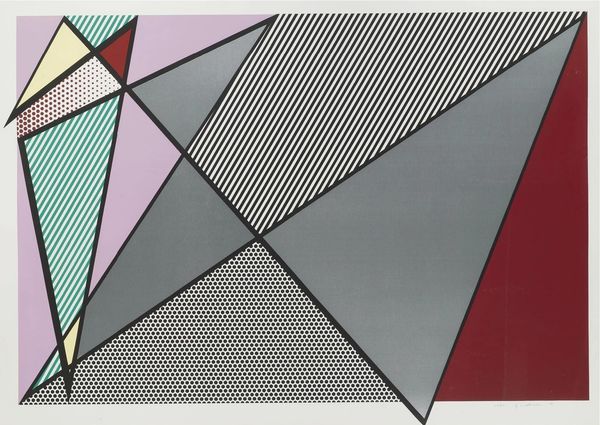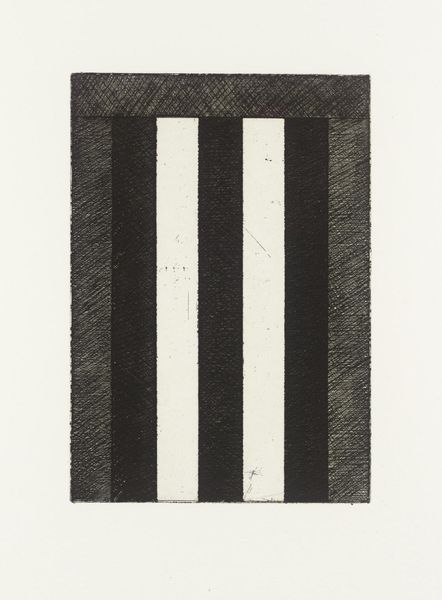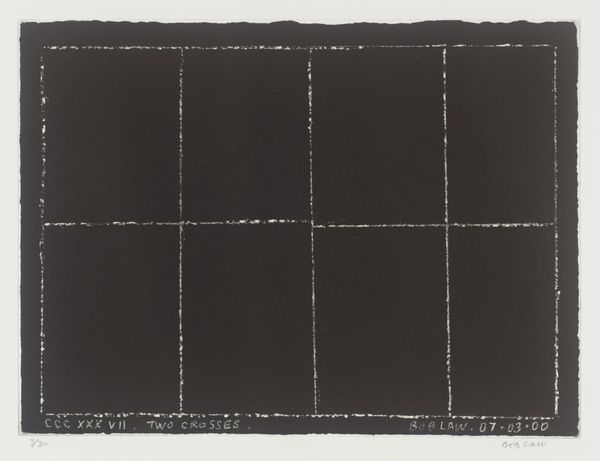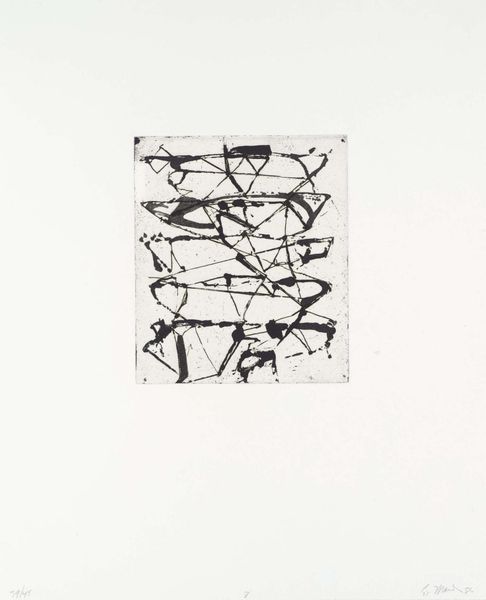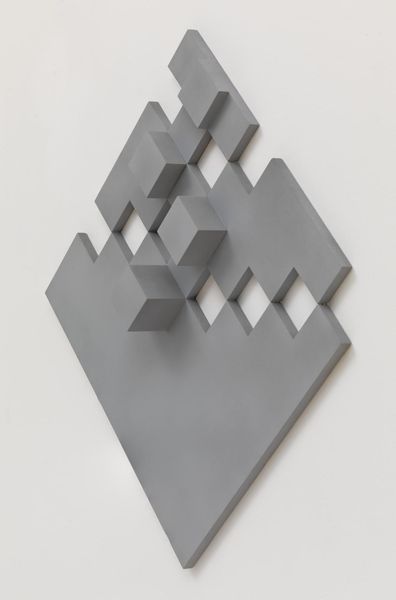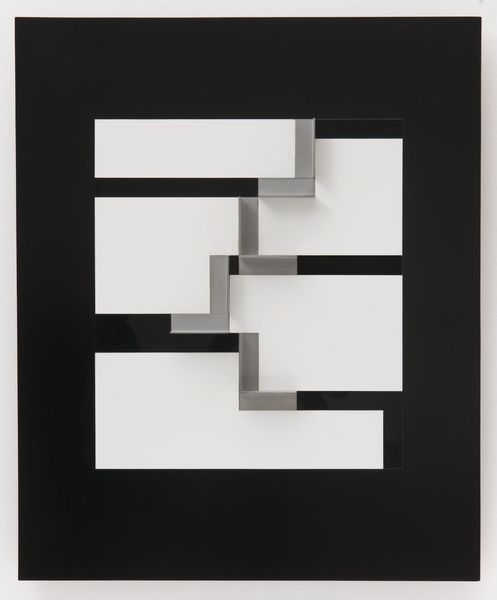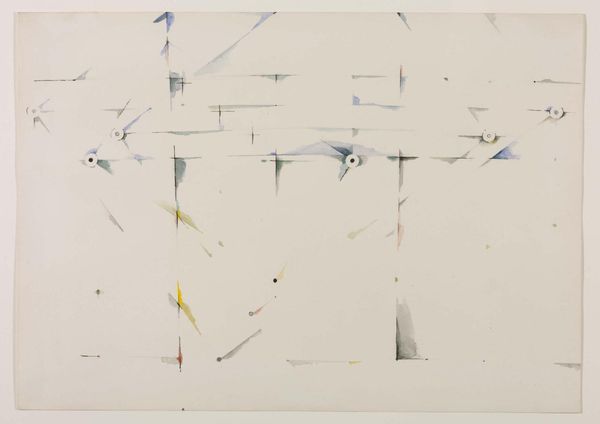
Dimensions: object: 1829 x 7315 x 279 mm
Copyright: © The estate of Mary Martin | CC-BY-NC-ND 4.0 DEED, Photo: Tate
Curator: Here we have Mary Martin's "Inversions," a relief construction, and it strikes me as an exercise in controlled chaos. What's your take? Editor: The sheer labor! The way each individual piece reflects light differently, the visible seams… it's about the construction process as much as the final form. Curator: Absolutely. Martin played with mathematical principles, turning repetition into something almost… lyrical. It feels like music, doesn't it? A complex, modernist symphony. Editor: I'd agree with the modernism. I wonder, though, about where she sourced the metal, and what the labour conditions were like for its production. Curator: That's a very important point. To consider the broader context, the materials and the making. It adds depth to the experience, doesn't it? Editor: It’s essential to see the artwork as more than just an object; it’s a product of its time, reflecting societal and material conditions.
Comments
Join the conversation
Join millions of artists and users on Artera today and experience the ultimate creative platform.
tate 6 months ago
⋮
Martin was interested in the relationship between art and architecture. She was also thinking about questions of proportion and variation – issues that relate to architecture as much as art. The 96 aluminium panels are positioned according to a sequence, which is then repeated backwards as the ‘inversions’ of the title. Inversions is an abstract work, but Martin’s choice of reflective material means that it always includes elements of the environment where it is displayed, including the bodies of the viewers in front of it. Gallery label, May 2019
